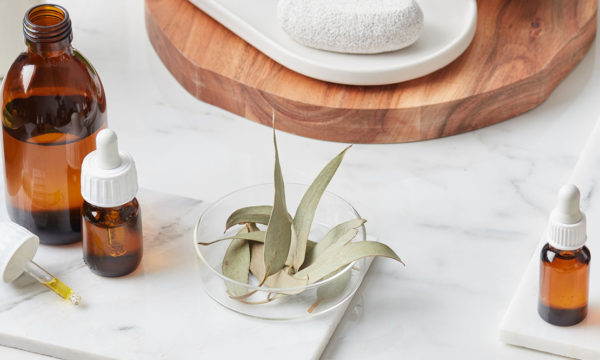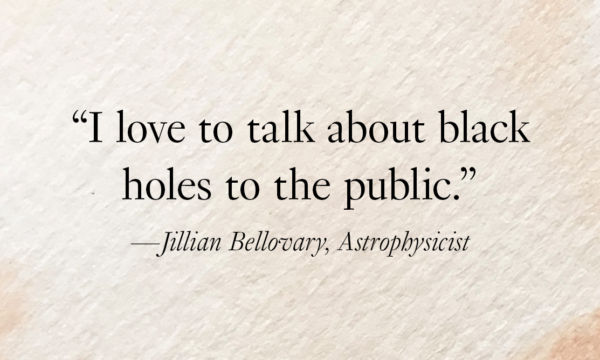So, What Do You Do? Part 7: Monica Torres, Embalmer
March 26, 2019 | Filed in: Your Brain
“So, What Do You Do?” is an MM series featuring extraordinary women in the kinds of jobs that make you sit up and say, “What’s that like?” Every week, another original entrepreneur, executive, artist, or scientist will own the answer by sharing what she does, how she does it, and why she does what she does. Up this week, embalmer and funeral director Monica Torres on compassion, bodily fluids, and different ways of mourning.
When a stranger asks Monica Torres what she does for a living, she tells them she is an embalmer and a funeral director, in that order. “I like meeting families and I get wonderful gratification from moving them through the funerary process, but where I really shine is in the prep room,” says Torres, the founder of NXT Generation Mortuary Support Services in Phoenix, Arizona. “That’s where I feel like I have the most to offer families, especially ones that think they won’t be able to see their loved one again.” In addition to embalming, Torres is a cosmetic reconstructive specialist and a funeral cosmetologist. She can fix everything from hair, makeup, and nails to gunshot wounds and other gruesome disfigurements. Her “gift,” as she calls it, is making the deceased look presentable at an open-casket funeral.
This gift is actually her second career. As a military wife for 10 years, Torres regularly moved with her now ex-husband from one state to the next, which made it hard to keep a job. She launched an at-home cosmetology business and then decided to make a change her thirties. Looking to apply her cosmetology skills to a new profession, “mortuary science just made sense,” she says. The first time the subject came up, Torres was 19 and she and her mother were looking through college catalogs. “My mother said, ‘You’re artistic, you’re compassionate, you care about people—this is the perfect job for you.’” The second time was when her grandmother died and Torres was asked to style her grandmother’s hair and makeup for the funeral. “She looked kind of strange and her skin felt different, but it didn’t bother me. I just got to work,” says Torres. “Then I realized, if I can do this for my own grandma, I can do it for somebody else’s grandma, too. It was a pivotal moment.”
Here’s just some of what she does in a day:
Keeps her business humming.
I do something different every day because my business offers a range of professional services to funeral homes. I develop new services and modern techniques for embalming and preparing bodies. I teach classes that are accredited through our state. I prepare bodies for cremation and funerals. I meet with funeral homes that may be interested in hiring me as a trade embalmer. If I get that contract, I might be embalming Tuesday through Thursday, or maybe they’ll call me on a Friday at 5 o’clock and say ‘Monica, we just got slammed. We have five bodies and a service the day after tomorrow. We’re up against a wall. Can you come in tonight?’ And I’ll say sure, because I’m on call 24/7.
Brings empathy and understanding to her job.
Funeral directors and embalmers meet daily with families. You have to be a naturally compassionate person. If you can’t be empathetic, you will fail at this job. Also, you need to have a high level of emotional intelligence. Understanding social cues and communicating effectively is important. Being socially outgoing helps, too. I’m able to have a natural conversation with a family and they’re able to relate to me.
Does her time in the trenches.
There’s blood and bodily fluids in the prep room, and all the smells that surround death. People don’t have any idea what it takes to make a dead body look presentable and smell presentable. But I do whatever I need to do to give that person their dignity back. That’s my job.
Works nights.
I prefer it, because then I’m not interrupted. It also allows me to do my marketing during regular business hours.
Sees her job as part of an ancient art.
No matter how “green” we get or how much more affordable cremation becomes, I believe in the value of open-casket healing and the art of embalming. I use modern techniques, but embalming is something I do the old-fashioned way. I believe in being able to say goodbye face to face.
Works hard not to impose her own values on people with different traditions.
I’m Mexican-American. In a way, I had to unlearn my own cultural and social mores when it comes to funerals. Not all families grieve and mourn the way that families in my culture do. When I was growing up, everyone who died got embalmed, were buried in a metal casket, and had a church service. Typically, Latino families are very emotional: crying and screaming, people trying to get in the casket with the person, sobbing all over them, rubbing their hair, all that stuff. But I noticed early on in this business that Anglo families were very stoic. Grieving was done in private. The services were quiet, calm, and quick. Seeing all the different ways that people mourn—Muslim families, Buddhist families, Jewish families—you have to be sensitive to other people’s norms.
Stresses about meeting her own high standards.
The pressure of re-creating a lasting memory for the family gives me anxiety, because I know how traumatizing it can be for people to approach a casket. I worry about the family being disappointed [in my work]. I want that person to look the way the family loves and remembers them.
Celebrates her victories.
I was featured on the cover of American Funeral Director magazine, which is known for having mostly men on the cover. [I want to be remembered for] blazing a trail for the next generation of women in American funeral service. I’ve had people tell me my whole career that I would never be successful. When people say stuff like that, it just motivates me to work harder.
Thrives on helping people in their time of need.
A grieving widow told me that I was the light in the midst of darkness. I realized the impact that I had on her and probably on a lot of other people in that dark time in their life. With large funerals, all eyes are on you. You’re there in your best Sunday attire, you have to look good, act the part, be the part. It’s nice to have people come up afterward and thank you for the service.
Knows what she wants to do next.
I think I’d be good at anything I put my mind to. It’s all about mental strength. But my dream job is to be a stay-at-home dog mom. That’s all I really want in life!









